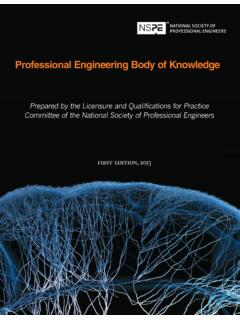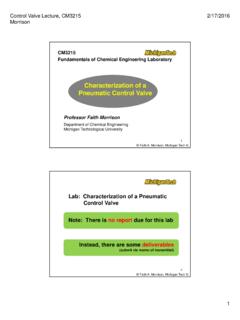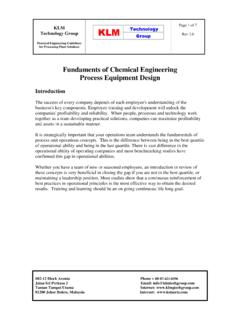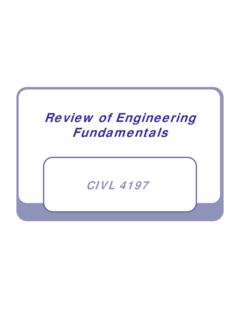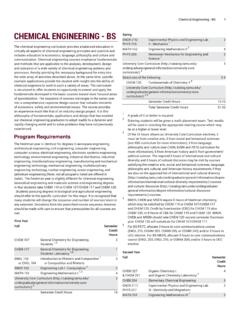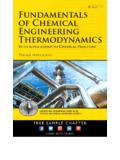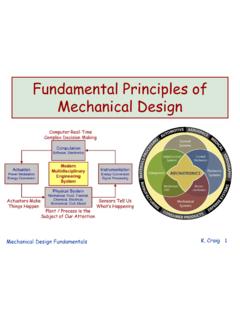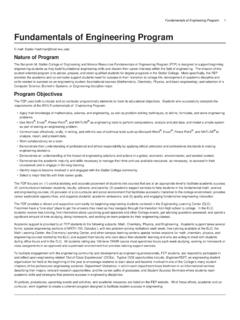Transcription of The Fundamentals of Engineering Exam as an …
1 The Fundamentals of Engineering Exam as an Assessment Tool of Engineering and Engineering technology programs : A Plan For The Future 2012 Executive Board of the NSPE Professional Engineers in Higher Education David A Rockstraw (Past-Chair), Las Cruces, NM; Robert Lang (Chair), Anchorage, AK; Thomas E Hulbert, Hingham, MA; Gregory D Reed, Knoxville, TN; Walter W Buchanan, College Station, TX; Claudius A Carnegie, Miami, FL; Sam A Kiger, Columbia, MO; David E Schultz, Newburgh, IN; William Oakes, Lafayette, IN; Thomas C Roberts, Manhattan, KS; Sam Vigil, San Luis Obispo, CA; Timothy Johnson, Boston, MA; Paul J Bakken, Centennial, CO; Robert A Green, Mississippi State, MS; NSPE Senior Manager, Education: Marcia Prichard; The Fundamentals of Engineering Exam as an Assessment Tool of Engineering and Engineering technology programs : A Plan For The Future 2 Introduction With the assistance of the National Council of Examiners for Engineering and Surveying (NCEES), the Professional Engineers in Higher Education (PEHE) interest group of the National Society of Professional Engineers (NSPE) has been soliciting Engineering and Engineering technology programs to share methodologies of use of the Fundamentals of Engineering (FE) Exam as an assessment tool for ABET accreditation.
2 PEHE collected the details of how such programs use the FE data in their respective self-study reports. This document describes the compilation of methodologies received from programs that chose to participate. programs that provided input to this collection are presented in Table is noted that the few contributions to this effort represent a broad cross-section of program types and sizes. Table 1. programs participating in this survey Program page University of Evansville Civil Engineering Program .. 5 University of Florida Engineering School of Sustainable Infrastructure and Environment .. 16 New Mexico State University Department of Chemical Engineering .. 19 Oregon State University School of Civil and Construction Engineering .. 23 Southern Utah University Department of Integrated Engineering .. 25 The University of Texas at Austin Cockrell School of Engineering .. 28 Texas Tech University Department of Civil & Environmental Engineering .. 32 Vermont Technical College Dept.
3 Of Architectural & Building Engineering technology .. 40 Contributions contained within this compilation were each prepared by representatives of the corresponding programs , and represent the methods and the analysis of data that is performed by each program demonstrating their individual use of FE data in their assessment process. The Fundamentals of Engineering Exam as an Assessment Tool of Engineering and Engineering technology programs : A Plan For The Future 3 Background The use of the FE for assessment began receiving attention in the 1990s. It was recognized that many factors besides basic Engineering aptitude contribute to performance, with adequate motivation to pass thought to be one of the most 1996, the exam was formatted to permit program-specific assessments to be made. The NCEES provided raw FE performance data to the University of Missouri-Rolla in 1998 to permit a study of the value of such data in the assessment of student learning. The subsequent analysis by Watson However, the NCEES did not make the data available for the purpose of assessment at that time.
4 2 Since that time, a number of methodologies for applying FE results to assessment have been published concluded that the FE examination generated significant amounts of useful assessment data that was not being utilized by Engineering programs . It was once again noted that the examinee s motivation to pass contributed to the viability of the results obtained. It was further noted that sample size could confound the analysis. The author concludes that NCEES should be providing performance data to institutions to permit the use of these results in program assessment. 3,4,5,6,7,8,9 The National Council of Examiners for Engineering and Surveying (NCEES) published a white paper that have used historic FE performance data to assess the overall program, topics within a program, as well as individual course content within a program. 10containing contributions from a half-dozen authors having extensive credentials in administration and evaluation of academic programs , preparation of the licensing examination, and governance of the licensing process.
5 This white paper included previously published 2010, the NCEES sought to understand the extent to which the FE exam is used as an assessment tool. The NCEES subsequently surveyed the 380 EAC/ABET institutions that receive the Subject Matter Report. Only 84 responses to the survey were received, of which 30 indicated that some programs within their institution required students sit for the FE as a condition of graduation (consistent with earlier findings 12 The white paper presents three methods for using the FE results in program assessment: Percentage-Correct Method; Ratio Method; and Scaled-Score Method. Examples for each method are presented, demonstrating how a program might incorporate the FE results into their assessment process. For each method, the treatment of data is discussed and the results are graphically compared to example program expectations. ), while 57 institutions indicated that the FE is used for ABET assessment by at least some departments. The Fundamentals of Engineering Exam as an Assessment Tool of Engineering and Engineering technology programs : A Plan For The Future 4 Survey Results The following sections present summaries of the responses from the eight participating programs .
6 These sections contain detailed analyses performed by the named departments in the assessment of their respective programs in Engineering and Engineering technology . These contributions are either descriptions of how each program includes FE data in their assessments, or the actual quantification efforts to process the raw data and evaluate the results. Plans for the Future It is the position of the NSPE PEHE interest group that licensure should be promoted and encouraged to students of Engineering programs by the faculty, and that Engineering programs should dictate attempting the FE exam as a requirement of graduation. Such action will not only improve the viability of assessment data, but will also ensure the next generation of Engineering and technology graduates carry this important qualification. PEHE members are available to provide support and advise institutions that wish to implement use of the FE in their curriculum as an assessment tool. PEHE supports the work by the NSPE Licensure & Qualifications for Practice Committee (L&QPC) directed toward requiring faculty who teach upper division and graduate courses containing design components to achieve licensure.
7 To accomplish this goal of increasing the number of licensed faculty who teach the design content of Engineering and Engineering technology curricula, it is necessary that students understand that attaining the license begins at the undergraduate level, when they retain a majority of the fundamental knowledge needed to perform well on the FE exam. PEHE is willing and available to provide support to all faculty who strive for licensure. Acknowledgements NSPE/PEHE would like to thank Lehmon Dekle and NCEES for assisting in identifying the users of FE data to solicit their participation in this project. The Fundamentals of Engineering Exam as an Assessment Tool of Engineering and Engineering technology programs : A Plan For The Future 5 University of Evansville Civil Engineering Program Contributor: Brian J. Swenty The civil Engineering program at the University of Evansville (UE) uses the Fundamentals of Engineering (FE) Exam as one of ten tools to assess program outcomes for EAC-ABET accreditation.
8 The civil Engineering program defines students as civil Engineering students at the time of graduation from the University of Evansville. The outcomes are listed below: a. Students will apply knowledge of mathematics and science b. Students will design and conduct laboratory experiments as well as analyze and interpret data c. Students will complete a civil Engineering design to meet desired needs within realistic constraints such as economic, environmental, social, political, ethical, health and safety, and sustainability d. Students will function on multidisciplinary teams e. Students will identify, formulate, and solve problems in at least four major civil Engineering areas f. Students will understand professional and ethical responsibilities of civil engineers g. Students will use effective communication techniques in the completion of Engineering projects h. Students will have the broad education necessary to understand the impact of Engineering solutions in a global, economic, environmental, and societal context i.
9 Students will have a recognition of the need for, and an ability to engage in, life-long learning. j. Students will be knowledgeable of contemporary issues k. Students will use the techniques, skills, and modern Engineering tools in use in the civil Engineering profession l. Students will apply knowledge of the Fundamentals of Engineering science specific to civil Engineering m. Students will begin the professional registration process by registering for and taking the Fundamentals of Engineering Exam Program Outcome Assessment Using FE Exam Data Several of the civil Engineering program outcomes are linked to student performance on the FE exam, including outcomes a, c, f, k, l, and m. The Fundamentals of Engineering Exam as an Assessment Tool of Engineering and Engineering technology programs : A Plan For The Future 6 The civil Engineering program graduates 10-18 students annually. All civil Engineering seniors are required to take the Fundamentals of Engineering Exam in partial fulfillment of the course requirements in CE 497, the second course in a 2-semester long senior capstone sequence.
10 Most ( > 90%) of civil Engineering students take the civil Engineering , rather than the general, afternoon FE exam, thus providing the program with important assessment data. Assessment criteria (performance indicators) were initially established for the program outcomes in 1999. The criteria have been modified twice since then. FE exam data is assembled and analyzed annually. The data is recorded in a 4-column civil Engineering program assessment report. Assessment results are evaluated and summarized in narrative form in the report. The report is reviewed annually by the Civil Engineering Advisory Council (CEAC), a group that represents all four of the program constituents: employers, alumni, faculty, and students. The CEAC met on April 29, 2011. The following was included in the CEAC minutes, A copy of the 4-column civil Engineering program outcome assessment report was provided to each CEAC member for review. Several CEAC members observed that the strength of UE civil Engineering students seems to be in hydrologic and hydraulic systems, structural design, materials, circuits, and ethics while the students are weaker in chemistry, construction management, and structural analysis.
